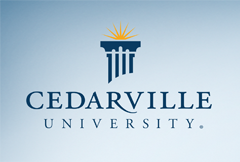Keywords
Frozen embryos, IVF, ethics
Abstract
Since 1978, there is now a population of unique human entities unlike the world has ever seen before. This group numbers at more than 500,000 individuals (Grabill, 2007). Some are brand new, created only days ago; others have been around for decades. Yet these entities, all comprised of human embryos, are all developmentally the same age. They are five to six days old, frozen in liquid nitrogen until their fate is decided.
And so a debate rages in our society. What should be done with all the frozen embryos? These are the excess or “left-over” embryos resulting from reproductive technologies, primarily in-vitro fertilization (IVF). There are five distinctly different potential fates: the embryos could be 1) implanted into the womb of their genetic parents, 2) implanted into the womb of an adoptive mother, 3) given up for research purposes, 4) thawed and thereby destroyed, or 5) simply left in a frozen state indefinitely. This will paper briefly discusses each possibility, and will give an ethical recommendation. Ultimately, this ethical dilemma is not one where we must choose the lesser of all evils; rather, it is an impasse where we must choose the greater of all goods.
Editor's Note
Every year, each student in bioethics classes at Cedarville University must write at least one paper endorsing a position with which the student does not personally agree. This difficult assignment is a way to better understand a variety of viewpoints, and helps the student to develop a sense of respect for the moral integrity of others. This paper is an excellent example: it represents a position that is actually contrary to the author’s personal view and that of his professor.
DOI
10.15385/jce.2013.13.1.2
Recommended Citation
Kinch, Christina
(2011)
"Let Them Be Heroes,"
CedarEthics: A Journal of Critical Thinking in Bioethics: Vol. 11:
No.
1, Article 2.
DOI: 10.15385/jce.2013.13.1.2
Available at:
https://digitalcommons.cedarville.edu/cedarethics/vol11/iss1/2
Creative Commons License

This work is licensed under a Creative Commons Attribution-Noncommercial-No Derivative Works 3.0 License.
Disclaimer
The CedarCommons repository provides a publication platform for fully open access journals, which means that all articles are available on the Internet to all users immediately upon publication. However, the opinions and sentiments expressed by the authors of articles published in our journals do not necessarily indicate the endorsement or reflect the views of Digital Services, the Centennial Library, or Cedarville University and its employees. The authors are solely responsible for the content of their work. Please address questions to the Digital Services staff.

